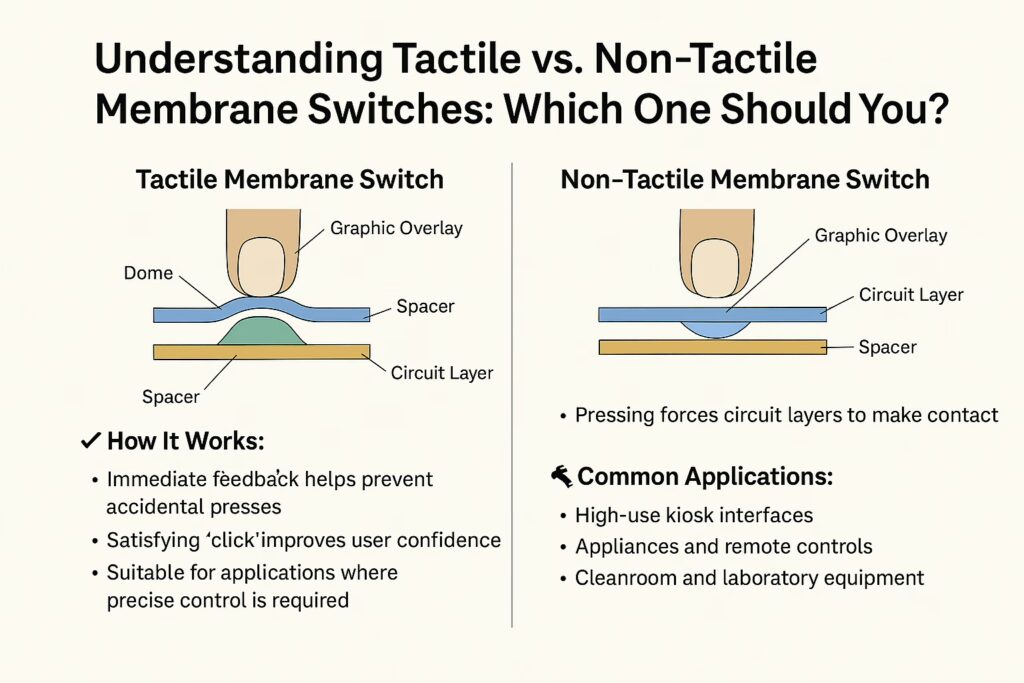


Welcome to Luen Fung Silicone Rubber Mfg., Co
Membrane switches are widely used in a variety of industries due to their reliability, sleek design, and cost efficiency. However, one key decision during the design process is choosing between tactile and non-tactile membrane switches.
In this article, we’ll explain the differences between tactile and non-tactile membrane switches, compare their performance characteristics, and help you decide which option is best for your application.

| Feature | Tactile Membrane Switch | Non-Tactile Membrane Switch |
| Feedback | Yes – physical click | No – relies on visual/audio |
| Lifespan | 1–2 million actuations | 5–10 million actuations |
| User Experience | High – satisfying to use | Moderate – needs feedback system |
| Cost | Slightly higher | Lower (simpler design) |
| Complexity | More components (domes) | Simpler layering |
| Flexibilidad de diseño | Dome placement limits spacing | More freedom in circuit layout |
| Best For | Precision & low-volume use | High-use & long-life equipment |
Some designs combine tactile and non-tactile features, such as:
These hybrid configurations are excellent for user interfaces requiring both feedback and long life.
When deciding between tactile and non-tactile switches, ask the following:
When deciding between tactile and non-tactile switches, ask the following:
Both tactile and non-tactile membrane switches have unique strengths. The right choice depends on your product’s use case, environment, user interaction, and expected lifetime.
At [LUEN FUNG silicone Rubber Mfg., Co.], we help OEMs and engineers select the best membrane switch configuration for their specific needs. Whether you need a responsive tactile interface or a rugged non-tactile design for high-volume use, we offer custom solutions to match your application.
👉 Contact us today to learn more about our custom membrane switch manufacturing capabilities or request a free design consultation.